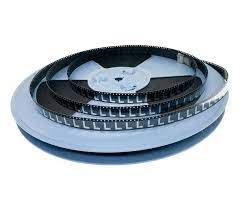In the realm of electronics manufacturing, the intricate world of Surface Mount Technology (SMT) and Surface Mount Devices (SMD) relies heavily on the use of various materials to ensure reliable performance and durability. One such material is pure nickel, often utilized in the form of SMD/SMT pads What is the price of SMD/SMT pad pure nickel. But what exactly dictates the price of these crucial components? Let’s delve into the factors that influence the pricing of SMD/SMT pad pure nickel.
Quality of Nickel Material
The quality of the pure nickel used in SMD/SMT pads plays a significant role in determining its price. Higher purity nickel typically comes at a premium cost due to its superior conductivity and corrosion resistance. Manufacturers may opt for nickel with specific purity levels based on the requirements of the intended application. The higher the purity, the more precise and consistent the electrical conductivity, which can affect the overall performance of electronic components.
Manufacturing Processes
The manufacturing processes involved in producing SMD/SMT pad pure nickel also contribute to its price. Complex production methods such as electroplating or chemical vapor deposition (CVD) require specialized equipment and expertise, leading to higher manufacturing costs. Additionally, any post-processing treatments, such as annealing or surface finishing, can further add to the overall expense.
Size and Thickness
The size and thickness of SMD/SMT pad pure nickel directly impact its cost. Larger pads or thicker nickel layers necessitate more material, increasing production expenses. Moreover, thicker nickel layers may offer enhanced conductivity and durability, but they also require more resources to manufacture, thus influencing the final price of the product.
Quantity and Packaging
The quantity of SMD/SMT pad pure nickel ordered can affect its price per unit. Bulk orders typically command lower prices per piece compared to smaller quantities due to economies of scale. Additionally, specialized packaging requirements, such as reels or trays for automated assembly, may incur additional packaging costs, which are factored into the overall pricing structure.
Market Demand and Supply
Market dynamics, including demand and supply fluctuations, can influence the price of SMD/SMT pad pure nickel. If there is a surge in demand for electronic components or a shortage of nickel supply, prices may rise accordingly. Conversely, during periods of low demand or oversupply, prices may stabilize or even decrease as manufacturers compete for market share.
Customization and Special Features
Customization options and special features tailored to specific applications can impact the price of SMD/SMT pad pure nickel. Additional features such as solderability enhancements, surface treatments for improved adhesion, or unique geometries may require extra production steps and resources, resulting in higher costs. However, these customizations can also provide added value by optimizing the performance and reliability of electronic assemblies.
Conclusion
In conclusion, the price of SMD/SMT pad pure nickel is influenced by various factors, including the quality of the material, manufacturing processes, size and thickness, quantity, market dynamics, and customization options. Understanding these factors is essential for both manufacturers and consumers to make informed decisions regarding the procurement of electronic components. By considering these aspects, stakeholders can ensure the optimal balance between cost-effectiveness and performance in their electronic assemblies.
If you’re in the market for high-quality SMD/SMT pad pure nickel, consider exploring Raytron’s offerings at Raytron. With a focus on quality and reliability, Raytron provides a range of nickel strip solutions tailored to meet the diverse needs of the electronics industry.
